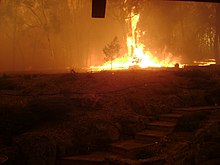Here's a quiz (for fun!) on the natural disasters associated
with plate tectonics.
How are you on this topic? Know your earthquakes and
volcanoes? (Answers in second half of article.)
 |
| From Wikipedia Commons |
1. One earthquake can trigger another earthquake:
A) Anywhere in the world
B) Anywhere along the Ring of Fire
C) Only on the same local fault system
D) Never
2. Which are easiest to predict?
A) Earthquakes
B) Volcanoes
C) Tsunamis
3. We are very close to being able to predict earthquakes.
A) True
B) False
4) Earthquakes can only occur at plate boundaries.
A) True
B) False
5) We know where all the earthquake faults are on Earth.
A) True
B) False
6) The largest earthquake (by Richter or moment magnitude
scale) recorded in the past 100 years in the USA was in:
A) California
B) Missouri
C) Hawai`i
D) Alaska
7) The deadliest earthquake in the USA in the past 100 years
was:
A) The 1964 Alaska Quake
B) The 1906 San Francisco Quake
C) The 2004 Northridge Quake
D) None of the above
8) The biggest volcanic eruption worldwide in the past 50 years was
in:
A) The USA's Pacific Northwest
B) Iceland
C) Indonesia
D) None of those
9) It'd be safer to stand next to:
A) A hot-spot volcanic eruption like Hawai`i's
B) A subduction-zone volcanic eruption like Japan's
10) Many scientists think volcanoes, not asteroid impacts,
are the cause of at least some mass extinctions.
A) True
B) False
11) There are more earthquakes and erupting volcanoes lately.
A) True
B) False
The answers, as I understand them:
1-C. While some scientists suggest a more remote trigger is
possible, no one has made the physics calculations work out, so I'm sticking
with the majority who say "it's very, very doubtful distant triggers happen." A
quake in Honshu Japan, for instance, could trigger one in Tokyo as the stresses
of the fault system are altered. But it won't trigger one in British Columbia
or Greece.
2-C. Tsunamis are by far the easiest to predict. Something
proximate (earthquake, landslide, asteroid plunging into the ocean) causes
them, and usually that trigger is easily detectable. In the shorter term,
"drawback," or the receding of the sea from the coastline, can alert
an observer to an imminent tsunami. Volcanoes are the next easiest to predict,
and scientists are making continual progress there. Earthquakes are nearly
impossible to predict at any timescale that would be useful for humans.
"There's going to be a terribly big quake just west of Seattle one day
soon" is a promise you can take to the bank. But what day? Oh, somewhere between tomorrow and the
year 2500. In other words, geological "soon" is not human "soon."
3-B. False. We are nowhere near being able to predict
earthquakes. It may be impossible to ever do so in any meaningful way.
4-B. False. Quakes can occur almost anywhere. Intraplate
quakes are less common, but they can be powerful and devastating.
5-B. False. We do not know every one--though we probably
know of all of the big, active ones. New ones are discovered all the time,
sometimes only when there is a sizable earthquake that reveals it.
6-D. Alaska has had the largest nine earthquakes of
the past 100 years in the U.S. (And the largest volcanic eruption of the past
103 years.)
7-D. The 1946 Alaska quake caused more deaths than the 1964
one, according to the USGS. What about 1906? That was more than 100 years
ago--gotcha with a trick question!
8-D. The 1991 Mt. Pinatubo eruption in the Philippines was
the largest, with about 10,000,000,000 tons of magma (rock and ash) ejected.
9-A. While I wouldn't advise being in any eruption,
Hawai'i's volcanoes are usually much kinder. The lava moves slowly and is, most
days, easy to outrun, even for a little old lady with a cane. This is not true
of every hot-spot volcano or every hot-spot eruption. Still, every moderate-sized Pinatubo/Mt. St. Helens/Krakatoa/Mt. Ontake eruption is one
you'd best be many kilometers away from.
10-A. True. More mass extinctions are due to vast volcanic
eruptions ("traps"), it is generally agreed, than to impacts. In fact, there is
still reasonable debate about what killed the dinosaurs--the one impact, or a
combination of impact and the Deccan lava flows. Plenty of evidence is piling
up for the latter explanation. (Though it's not quite as Hollywood somehow, and
the Chicxulub story will be hard to supplant in the public's mind.)
11-B. False. Over the course of the planet's history, there
have been and will be steadily fewer as the planet's interior continues to slowly cool. Of
course, that's happening on a geological time scale. Over your lifetime, there
will be about as many the year you die as the year you were born. What has
changed over my lifetime is news reporting. There are more cameras, more
sensors, more news outlets, the internet, and so plate tectonic-driven disasters are known
about worldwide in an instant. If,
rather than relying on the selective perceptions that TV news gives us, we
check (I do) the worldwide map of earthquakes over 4.0 every single day, it
will become obvious that there are light weeks and heavy weeks but that there is no recent increase.
Sources: USGS, Wikipedia, and many more.





